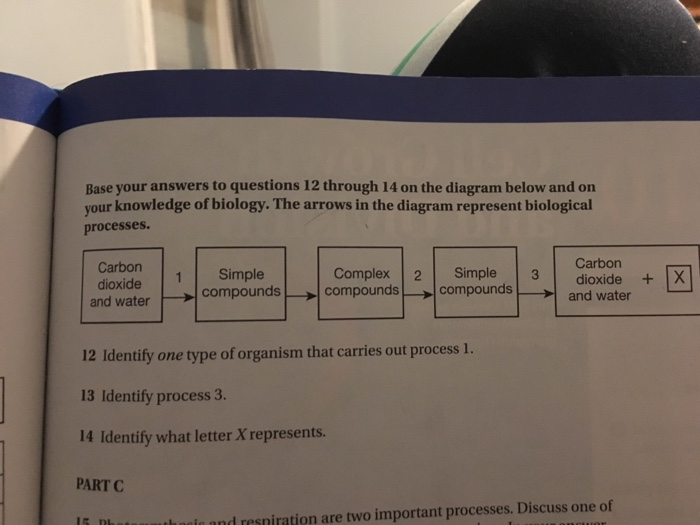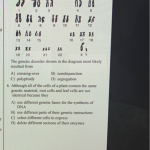Have you ever stopped to think about the intricate web of relationships within an ecosystem? As we delve into the fascinating world of biology, it’s crucial to understand how different species interact with one another and their environment. In this blog post, we’ll be exploring a fundamental concept that underlies many ecosystems: symbiosis.
Symbiosis: The Unlikely Union
Symbiosis is a term coined by German zoologist Heinrich Anton de Bary in 1879 to describe the close and often long-term relationship between two different species. This relationship can be mutually beneficial, meaning both organisms profit from each other’s presence, or it can be parasitic, where one organism benefits while the other is harmed.
The Diagram: A Visual Representation of Symbiosis
In the diagram below, we’ll examine a classic example of mutualism – the relationship between clownfish and sea anemones. Take a look at the diagram and notice how the clownfish live among the tentacles of the sea anemone, seemingly oblivious to the danger posed by the anemone’s stinging cells.

Have you ever stopped to think about the intricate web of relationships within an ecosystem? As we delve into the fascinating world of biology, it’s crucial to understand how different species interact with one another and their environment. In this blog post, we’ll be exploring a fundamental concept that underlies many ecosystems: symbiosis.
Symbiosis: The Unlikely Union
Symbiosis is a term coined by German zoologist Heinrich Anton de Bary in 1879 to describe the close and often long-term relationship between two different species. This relationship can be mutually beneficial, meaning both organisms profit from each other’s presence, or it can be parasitic, where one organism benefits while the other is harmed.
The Diagram: A Visual Representation of Symbiosis
In the diagram below, we’ll examine a classic example of mutualism – the relationship between clownfish and sea anemones. Take a look at the diagram and notice how the clownfish live among the tentacles of the sea anemone, seemingly oblivious to the danger posed by the anemone’s stinging cells.
At first glance, it may seem counterintuitive that the clownfish would risk their lives by living among the anemone’s tentacles. However, this is where symbiosis comes into play. The clownfish benefits from the safe shelter provided by the anemone, while the sea anemone receives cleaning services from the clownfish. The clownfish helps to remove parasites and debris from the anemone’s tentacles, which improves its overall health.
Types of Symbiosis
Symbiosis is not limited to just one type of relationship. In fact, there are three main types:
- Mutualism**: Both organisms benefit from the relationship, as seen in the clownfish and sea anemone example.
- Commensalism**: One organism benefits, while the other is not affected. For instance, remora fish attaching themselves to sharks for transportation and food.
- Predation**: One organism benefits by consuming another (parasitism), while the other is harmed.
Real-World Applications of Symbiosis
Symbiotic relationships can have significant impacts on ecosystems. For example:
- Mycoremediation**: Certain fungi form symbiotic relationships with plants to clean pollutants from soil and water.
- Coral reef ecology**: Symbiotic relationships between coral, algae, and fish support the health of entire ecosystems.
As we continue to explore the fascinating world of biology, it’s essential to recognize the importance of symbiosis in shaping our understanding of ecological interactions. Stay tuned for our next installment as we delve into the complexities of this phenomenon and its implications for our environment!
As we’ve explored the concept of symbiosis, let’s summarize the key points covered so far:
- Symbiosis is a close and often long-term relationship between two different species.
- This relationship can be mutually beneficial, where both organisms profit from each other’s presence, or it can be parasitic, where one organism benefits while the other is harmed.
- We’ve examined a classic example of mutualism – the relationship between clownfish and sea anemones.
As we wrap up this blog post, let’s reflect on the significance of symbiosis in ecosystems. Symbiotic relationships are a vital component of many ecosystems, as they allow species to thrive in environments that might otherwise be inhospitable. For instance, clownfish have formed a mutually beneficial relationship with sea anemones, which provides them protection from predators while the anemone benefits from the fish’s waste and eggs.
In conclusion, symbiosis is a fascinating aspect of biology that highlights the intricate web of relationships within ecosystems. By exploring these unlikely unions, we can gain a deeper appreciation for the complexity and beauty of life on Earth. As you continue to learn about biology, remember the importance of symbiotic relationships in shaping the world around us.





